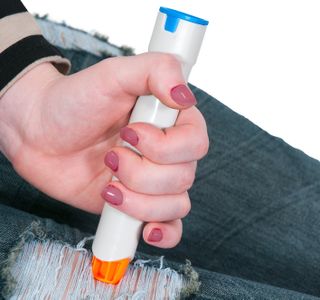EpiPen Alternatives Exist, and They May be Cheaper

The soaring price of the EpiPen has garnered controversy recently, but there are alternatives to this well-known allergy treatment device.
The EpiPen belongs to a class of medical devices known as epinephrine auto-injectors, which allow people to quickly inject a precise dose of the drug epinephrine. The devices are used to treat anaphylaxis, a life-threatening allergic reaction that can be triggered, in people who have the corresponding allergies, by foods, insect stings, medications and certain other substances. [More: How Do EpiPens Work?]
Because anaphylaxis can be deadly, it's critical that people with certain allergies have immediate access to epinephrine auto-injectors, said the American Academy of Pediatrics (AAP). In fact, the AAP recommends that children with food allergies carry two epinephrine auto-injectors with them at all times, in case a second dose is needed to treat an allergic reaction. (In general, allergies are more common in children than adults.)
But in recent years, the price of the EpiPen has increased dramatically, from $100 in 2007 to a current price of $600 for a two-pack, according to The New York Times. This price increase may limit access to the drug for people who need it, said U.S. Senator Charles Grassley of Iowa, who sent a letter this week to Mylan, the manufacturer of EpiPen, asking about the drug's pricing. And although health insurance may cover the drug, people with certain insurance plans, such as high-deductible plans, may have to pay the full price, according to USA Today.
But there is a cheaper alternative to the EpiPen, called Adrenaclick, which can be found at Walmart and Sam's Club for as little as $142 with a coupon, according to Consumer Reports. Adrenaclick provides the same medication, at the same doses, as the EpiPen, according to Adrenaclick's website. There's also a generic version of Adrenaclick, called "epinephrine injection, USP auto-injector." (There is no generic version of the EpiPen.)
However, the method of administering Adrenaclick or its generic version is a little different from that for the EpiPen; for example, Adrenaclick has two caps that need to be removed, while EpiPen has only one cap.
For this reason, it's important that users learn precisely how to use whichever device they have, the American Academy of Allergy, Asthma & Immunology (AAAAI) said.
Sign up for the Live Science daily newsletter now
Get the world’s most fascinating discoveries delivered straight to your inbox.
"The stress of an anaphylactic reaction is not the time to realize you have a different auto-injector than what was demonstrated to you by your allergist," AAAAI said.
Another brand of epinephrine auto-injector, called Auvi‑Q, was recalled last year because it was found to deliver potentially inaccurate doses of epinephrine, according to the Food and Drug Administration. It is no longer on the market.
It's theoretically possible to use a simple syringe with a dose of epinephrine to treat anaphylaxis. But this method is more complicated, because patients need to make sure that they measure out the proper dose and delivery it quickly, Consumer Reports said.
In one study, it took parents 142 seconds (2.4 minutes) to draw up a dose of epinephrine for infants using a syringe. (Since the dose of epinephrine in the EpiPen and Adrenaclick is premeasured, it doesn't need to be drawn up.)
Also, people should not premeasure a dose of epinephrine in a syringe (to have on hand in case of an allergic reaction), because epinephrine can degrade if it's exposed to light for a long time, according to the AAAAI.
On Thursday, Mylan said it would offer coupons that cover up to $300 of patients' out-of-pocket costs for the EpiPen.
Original article on Live Science.

Rachael is a Live Science contributor, and was a former channel editor and senior writer for Live Science between 2010 and 2022. She has a master's degree in journalism from New York University's Science, Health and Environmental Reporting Program. She also holds a B.S. in molecular biology and an M.S. in biology from the University of California, San Diego. Her work has appeared in Scienceline, The Washington Post and Scientific American.

